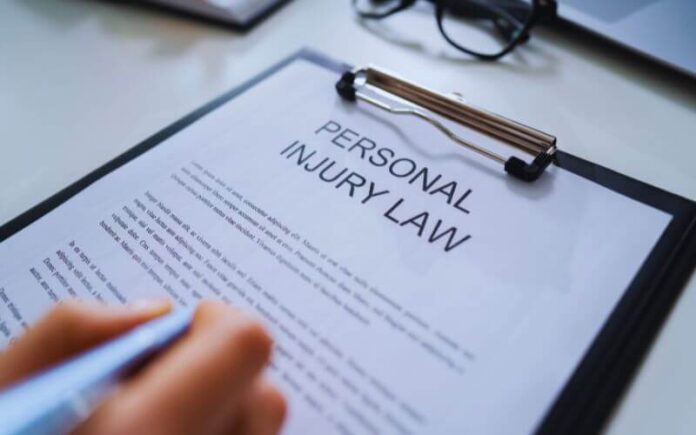Personal injury cases happen quite frequently in New York. In fact, about 1.5 million people get treated and released from an emergency department each year. If you are one of these people, knowing the basics of personal injury law can be really helpful in seeking justice.
In this blog, we are going to discuss what a personal injury is, what the grounds are for a personal injury case, some common types of personal injuries, damages, as well as the statute of limitations. In short – everything you need to know as a beginner.
What’s Considered a Personal Injury in New York?
In New York, personal injury is defined as harm inflicted on an individual due to the negligence or intentional actions of another person or entity. It includes bodily as well as non-bodily harm.
The legal framework for personal injury in New York allows the injured party to seek compensation for various types of damages.
To pursue a personal injury claim in New York, the injured party must establish that the defendant’s actions or negligence directly caused the injury. This often requires a thorough investigation and, in many cases, expert testimony to substantiate the claim and demonstrate the extent of the harm suffered.
In these cases, an individual who suffers an injury (the plaintiff) can file a lawsuit against a person or an entity that has committed a wrongful act (the defendant). Finding the right personal injury lawyer in New York is a crucial step there, as they will build the case.
Grounds for a Personal Injury Case
We already mentioned two grounds for a personal injury case: negligence and intentional wrongs. There are, however, three possible grounds to file a lawsuit in a personal injury case.
Here’s a brief explanation of all three:
Negligence
Negligence is the most common ground for personal injury claims. In these claims, your lawyer will try to prove that the individual you’re suing failed to behave with the level of care that someone else would have exercised under the same circumstances.
For instance, a driver running a red light and hitting a pedestrian would be considered negligent. Therefore, an injury resulting from such negligence would be considered a personal injury case.
Strict Liability
In some cases, it doesn’t matter if the individual was or was not negligent. The law holds them liable for committing a certain action or failing to commit one.
For example, a manufacturer is liable for a personal injury resulting from a defect in a product even when they didn’t intend for that to happen or were negligent.
Intentional Wrongs
Sometimes the defendant intentionally acts in a way that results in personal injury. This is also grounds for a personal injury case.
For instance, battery or assault are common examples of actions that result in personal injury from intentional wrongs.

Common Types of Personal Injury Claims
Common types of personal injury claims encompass a variety of scenarios. Among the most prevalent are:
Motor Vehicle Accidents
Car, truck, motorcycle, and pedestrian accidents are frequent. These often result from reckless driving, distracted driving, or driving under the influence. New York’s no-fault insurance law means that victims typically seek compensation from their own insurance for minor injuries, but serious injuries can lead to claims against the at-fault driver.
Slip and Fall Accidents
Property owners in New York have a duty to maintain safe premises. Slip and fall claims arise when individuals are injured due to hazardous conditions like wet floors, icy or uneven walkways, or poor lighting.
Medical Malpractice
These claims arise when healthcare professionals provide substandard or incorrect care, leading to patient harm. This can involve surgical errors, misdiagnosis, improper treatment, or medication mistakes.
Workplace Injuries
Workplace injuries are frequent as well, especially in industries like construction and manufacturing. These claims can involve accidents due to unsafe working conditions, a lack of proper training, or inadequate safety measures.
These claims often involve the state’s workers’ compensation system, but severe cases might lead to additional personal injury lawsuits.
Product Liability
Product liability claims occur when defective or dangerous products cause injury. Consumers rightfully expect to remain safe when using the product as intended. If they end up hurt due to its unsafety or malfunction, they can sue the manufacturer.
Some common examples include faulty machinery, unsafe pharmaceuticals, or hazardous consumer goods.
Damages
When discussing damages, there are two types: compensatory and punitive.
Compensatory Damages
The purpose of compensatory damages is to restore the victim as if the injury never occurred. They can also be divided into two categories: damages that compensate for monetary losses and damages that compensate for non-monetary losses.
Monetary losses can take many different forms:
- Medical expenses – both past and future medical care and rehabilitation;
- Lost wages – in cases where the victim lost wages due to an inability to work or when they lost earning capacity as a result of an injury;
- Costs of living with a disability – when an injury results in a disability;
- Repair or replacement of property – when the victim’s property is damaged (for instance, in a car accident);
- Funeral costs – the family of the victim may recover the funeral costs when death is the result of the injury.
Non-monetary losses are difficult to calculate due to their nature. They include:
- Pain and suffering – include both physical pain and emotional distress (fear, loss of enjoyment of life);
- Loss of consortium – sometimes spouses of victims can receive damages for the loss of the emotional elements of marriage, such as loss of affection, companionship, or sexual relations.
Punitive Damages
Punitive damages are designed to punish the defendant for inflicting the injury and deter others from doing the same. This type of damage is frequently caused when the defendant’s behavior or actions have been especially egregious or outrageous.
Statute of Limitations
The statute of limitations is a timeframe during which a legal proceeding must be initiated. The statute of limitations for personal injury cases is three years in New York. The timeframe is shorter if the defendant is a governmental agency – 1 year and 90 days.
To Sum Up
In conclusion, understanding personal injury law in New York is essential for those affected by another’s negligence or intentional actions. Personal injuries can encompass physical and non-physical harm, with victims entitled to seek compensation for medical expenses, lost wages, pain and suffering, and emotional distress.
Knowing these basics can significantly aid in navigating the legal process and seeking justice.


